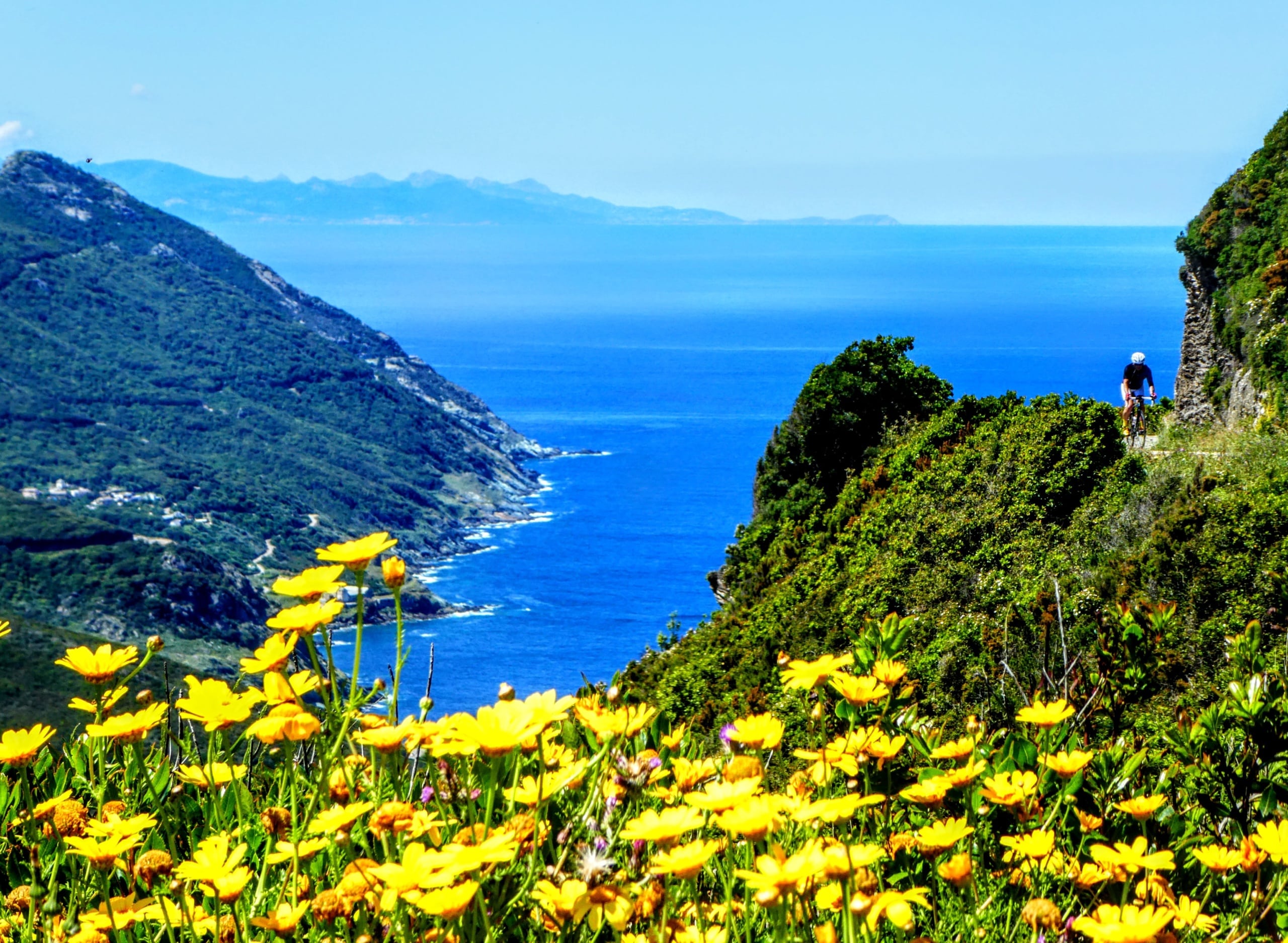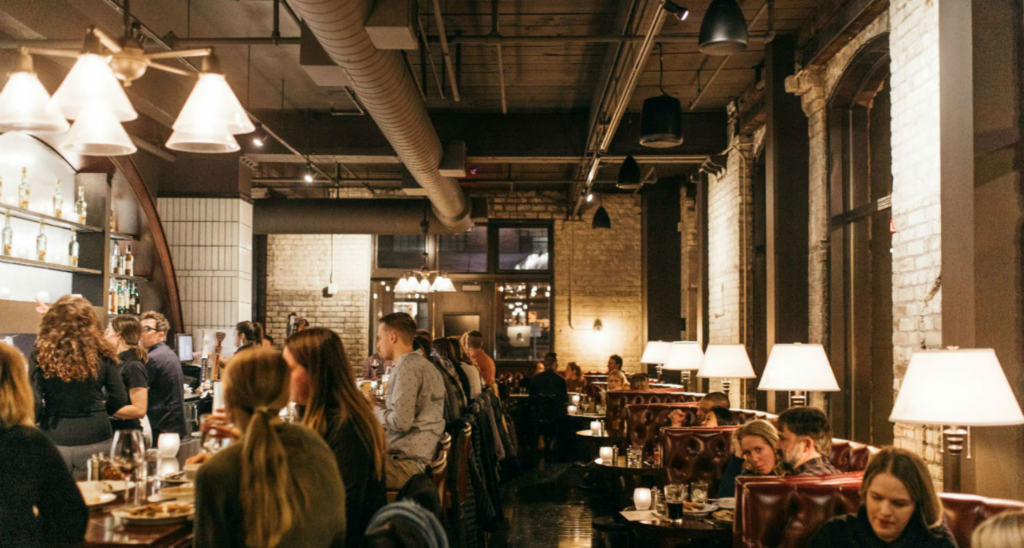June 17, 2019
Imagine a place that combines the best of Italy’s pasta and pizzas with the best of French bread and pastries. A place without the Italian “We’ve got time” mentality, also lacking the French indifference. Sound like Utopia?
It’s Corsica.The questions begin:
No, we didn’t go to Corsica because we’ve run out of places to travel. And no, we’re not just checking off boxes. No, again, we weren’t just tired of the “monotony” of bicycling the beautiful hilltop towns in Provence.
We sought it out for the same three reasons we go most new places:
- Beauty: It’s a mountainous Mediterranean island—no further explanation needed.
- Food and Wine: See above on food. Bonus: Corsica also makes a lot of great wines right on the island
- Culture/History: A fascinating mishmash of French and Italian that creates a distinctly Corsican culture
(Okay, there is a fourth, but it does sound a bit snobby: great hotels.)
The Overview:
We opted for the northern coast of Corsica, with a self-planned (along with our friends George and Niki), somewhat supported bicycle ride between three distinct places and hotels. The general daily program was to bicycle to a late boozy lunch, followed by a short bike ride to the hotel. A few nights in each place, minimal transport, with lots of eating and drinking in between. From Calvi to Bastia, more or less (my favorite overused French phrase).
When we started on the west Corsican coast, we could see France’s coast near Nice on a clear day. When we ended, we could see Genoa. That’s the long way of saying that Corsica is a Mediterranean island off the coasts of both France (southern coast) and Italy (northwestern coast). Its closest neighbor in the south is Sardinia, an Italian island a short ferry ride away.
The History:
Why does it combine Italian and French culture? It was pure Italy (although the island itself was pretty independent) until Corsica was lost to France in 1768—wagered in a poker game, because the French wanted access to better pizza.
Okay, maybe the Italians just got their asses handed to them when France decided to conquer the island. (A history teacher, I am not, but wouldn’t my classes be more fun?) Mussolini did try (unsuccessfully) to get it back during World War II.
The Culture:
Corsicans are pretty provincial and independent, with an Italian heritage and a French government. The language is a hybrid of what sounds like made-up words (they call it Corsu) that sort of resemble either French or Italian, depending upon how much wine you’ve consumed. (In Paris’ Orly airport, we quickly discovered it was also a popular weekend away for Parisians who like pizza.) Thankfully, we were able to get by with a few simple, but critically important words: Rouge (as in wine). Bonjour. Merci. (All evidence to the contrary, we do try to be polite.)
The Beauty:
Haute-Corse, our starting point, is the northern part of Corsica and is centered around Calvi, a pretty small town of about 5,000 perched on the water. Walking around the little hamlet and through the Citadel (a Genoese defensive tower from 1491), we also learned they claim Christopher Columbus as their son.
Haute-Corse has a spectacular coastal road, including the northwestern coastline from Calvi to Galéria, with a stop at the Notre Dame de la Serra (dramatically perched over the harbor). Calvi is also the gateway to the mountains and hilltop towns, including Montegrosso, Zília, Lumio, Sant’Antonino, each more beautiful and charming than the last.
Leaving Calvi for destination number two, we took another stunning coastal rode up and over the windswept rocks known as the Desert de Agriates, with the town of Saint-Florent on the coast and beach below (where the movie The Longest Day was filmed).
Our next location was staying slightly inboard near Oletta giving us another beautiful riding/touring day, where we discovered a different set of hilltop villages with sweeping views of the valleys and vineyards below. We rode from the town of Oletta to Sorio to Santo-Pietro-di-Tenda (the really-up-high guy), looping back through some of the amazing vineyards of Patrimonio. After a few days here, time to move on.
Unbelievably, the land got even more beautiful on Cap Corse, the peninsula that juts out of the top of the island. The western coastal roads from Nonza to Centuri (a large lobster port village), and mountain passes over to the eastern coastline, were nothing short of spectacular. The trip was highlighted by a stay in Tomino, a small village high above the coastal village of Macinaggio. It was hard to imagine riding one of the giant tourist buses that zoomed by, stopping occasionally for passengers to hop off, snap a picture, and hustle back to the cruise-ship-on-wheels. It was hard to imagine not seeing this incredible place by bike, even with the long ups and downs of the winding coastal road, and the challenging mountain pass to get over to the other side of the peninsula.
The Snobbery… I mean, Hotels:
You could probably make an entire vacation out of parking yourself at our hotel in Calvi, Hotel la Villa: a Relais and Châteaux hotel with views over the town and the water.
La Dimora was uniquely positioned further in the valley, looking up at Oletta, and had a green, pastoral setting in the midst of fruit and flower filled valleys and vineyards. This was an easy shot into the town of St. Florent for dinner at one of the freshest seafood market turned evening restaurants on the island: L’auberge du Pechaur.
Hotel le Tomino is teeny-tiny, with expansive outdoor decks overlooking the ocean and Italian coastline, offering one of the best viewing locations ever, especially as the weekend sailboats came in.
Anything else?
- The pizza.
- The fresh, fresh, fresh seafood.
- The crusty French bread at every meal.
- Smelling the broom, jasmine and orange blossoms.
- Seeing the bright red poppies everywhere.
- Tasting the Patrimonio wines.
- Sitting outside for every meal, soaking up the glorious combination of the sun’s warmth and the cool ocean breezes.
- Finding Myrtle, the Corsican version of Amaro, made from the myrtle bush berries.
- Discovering the cathedrals and churches in the center of every hilltop town.



